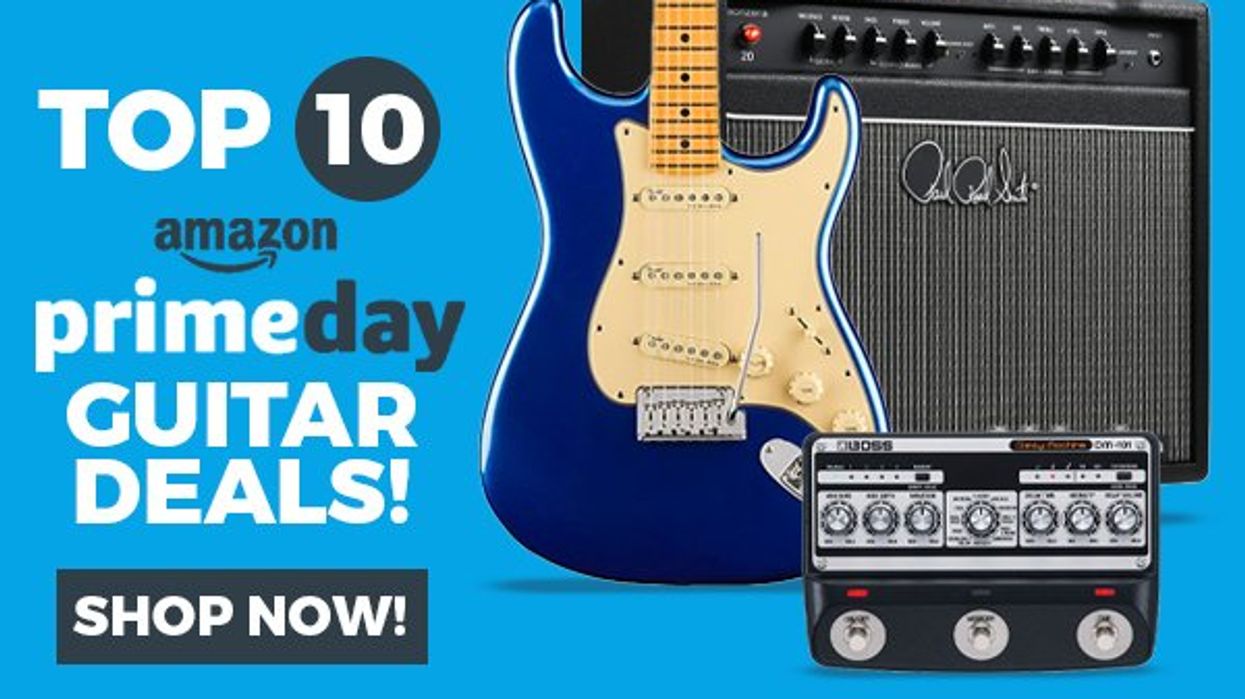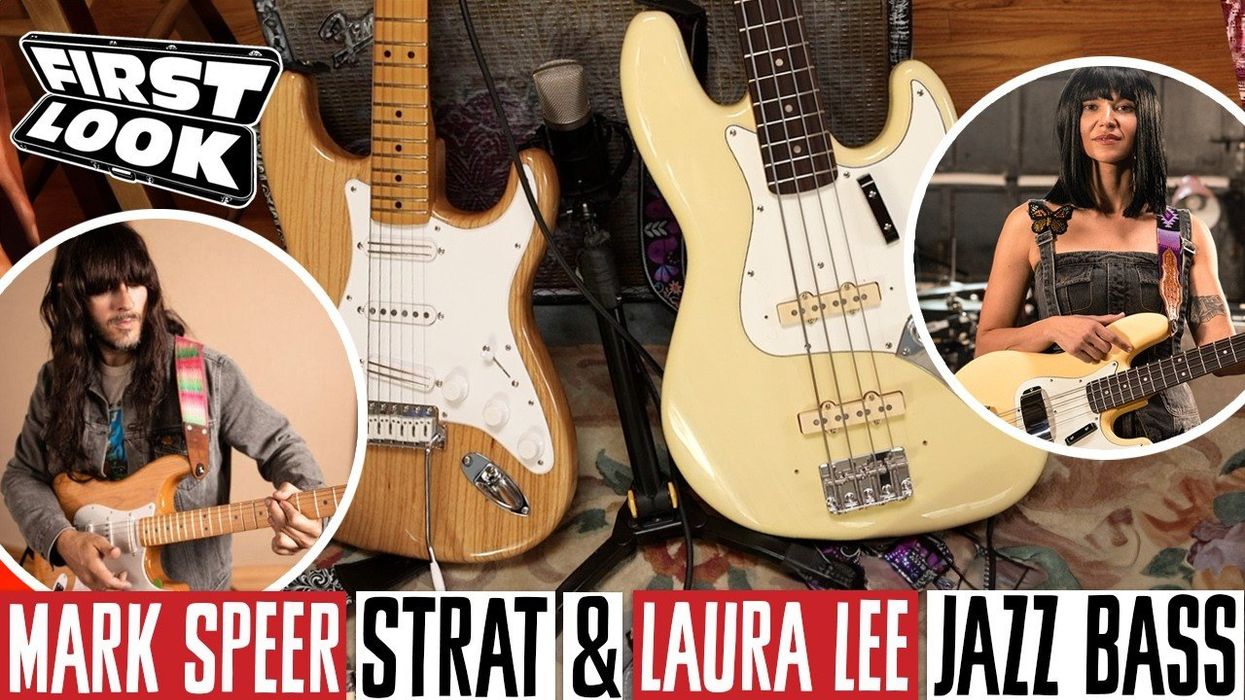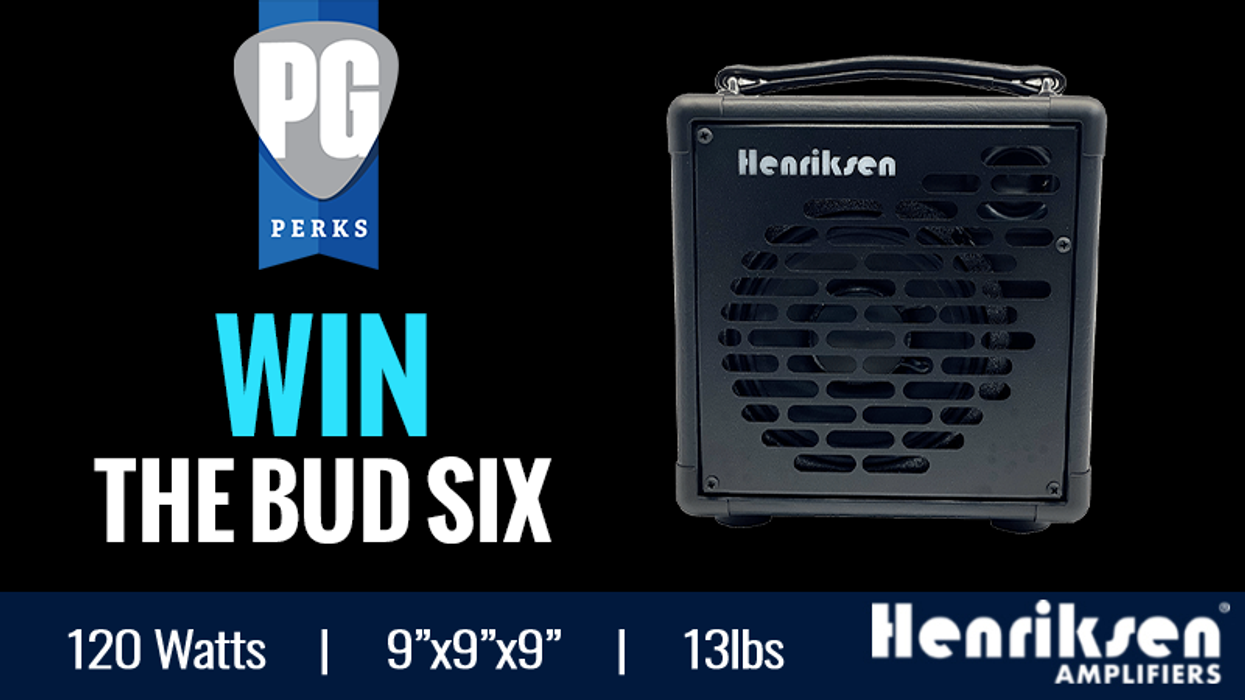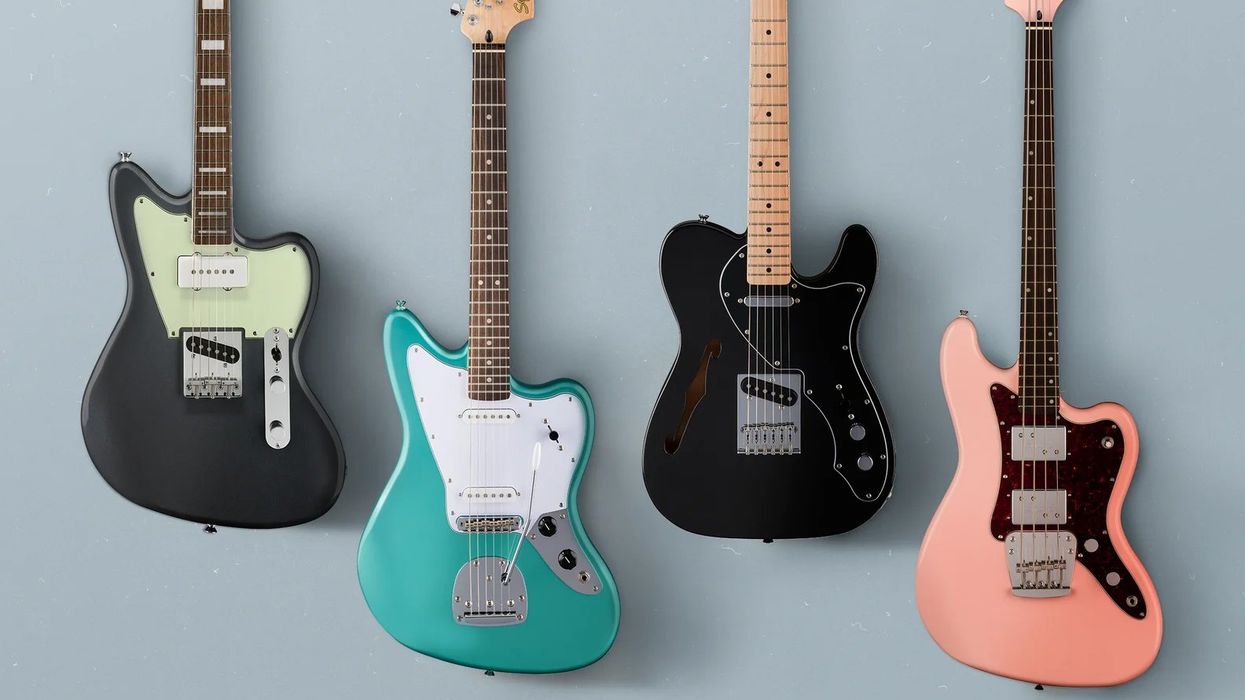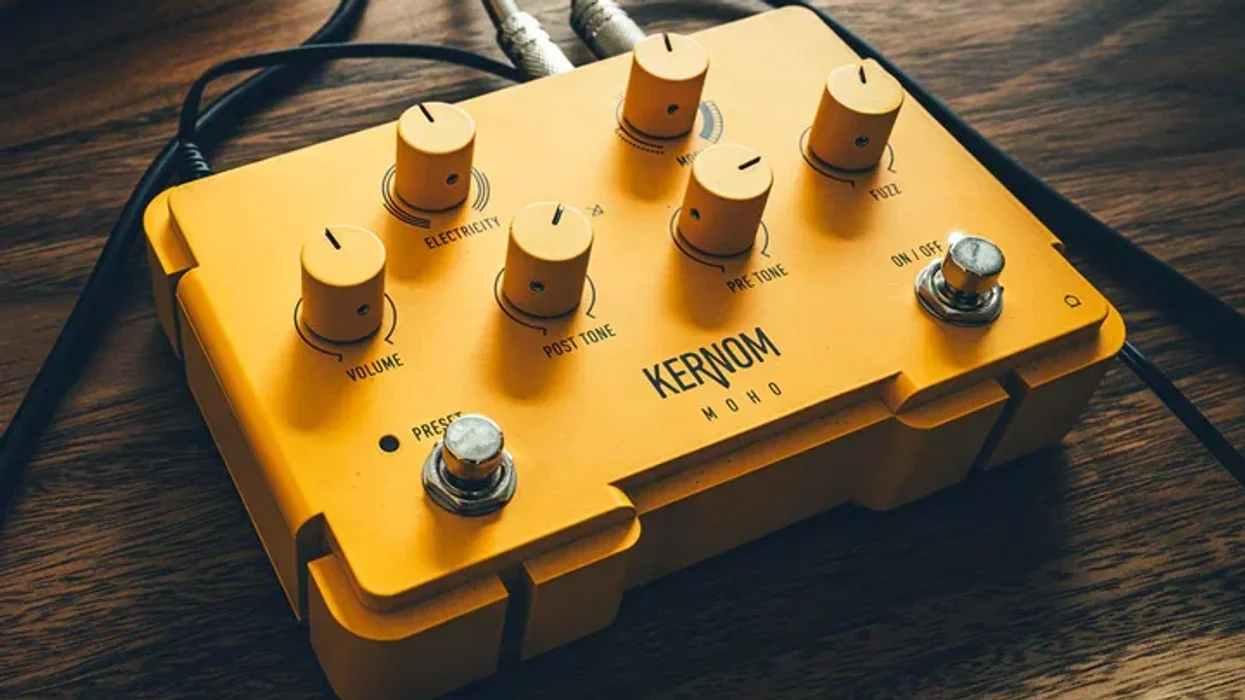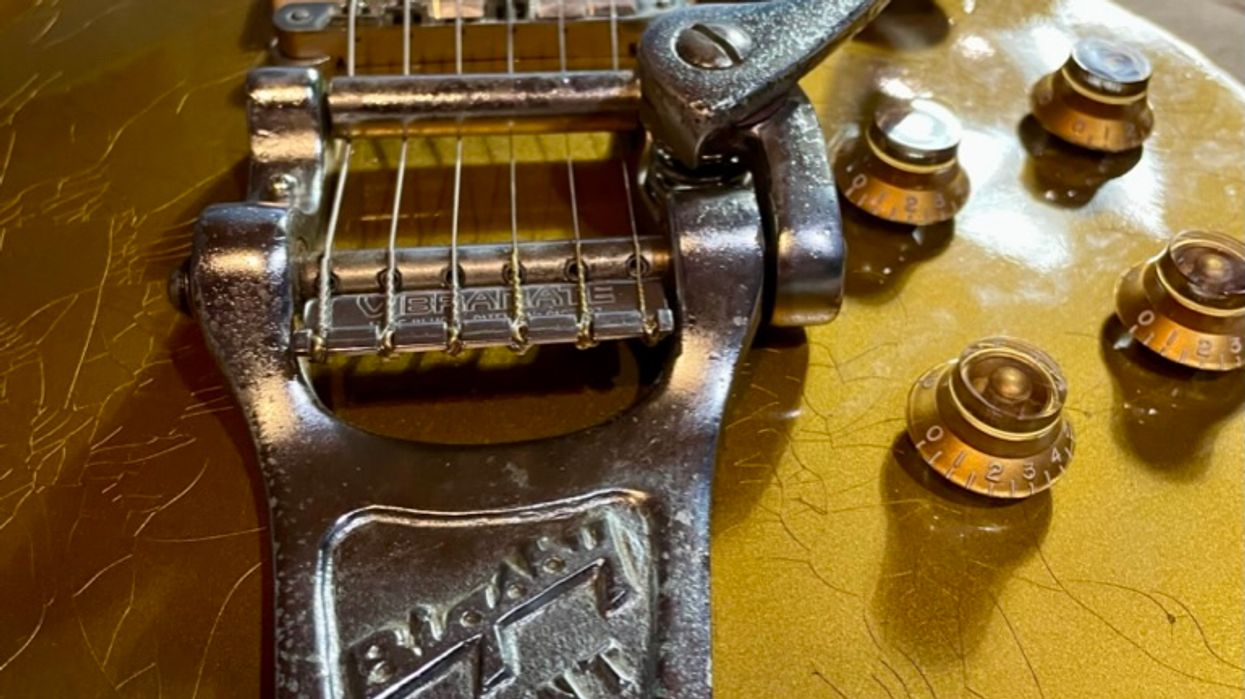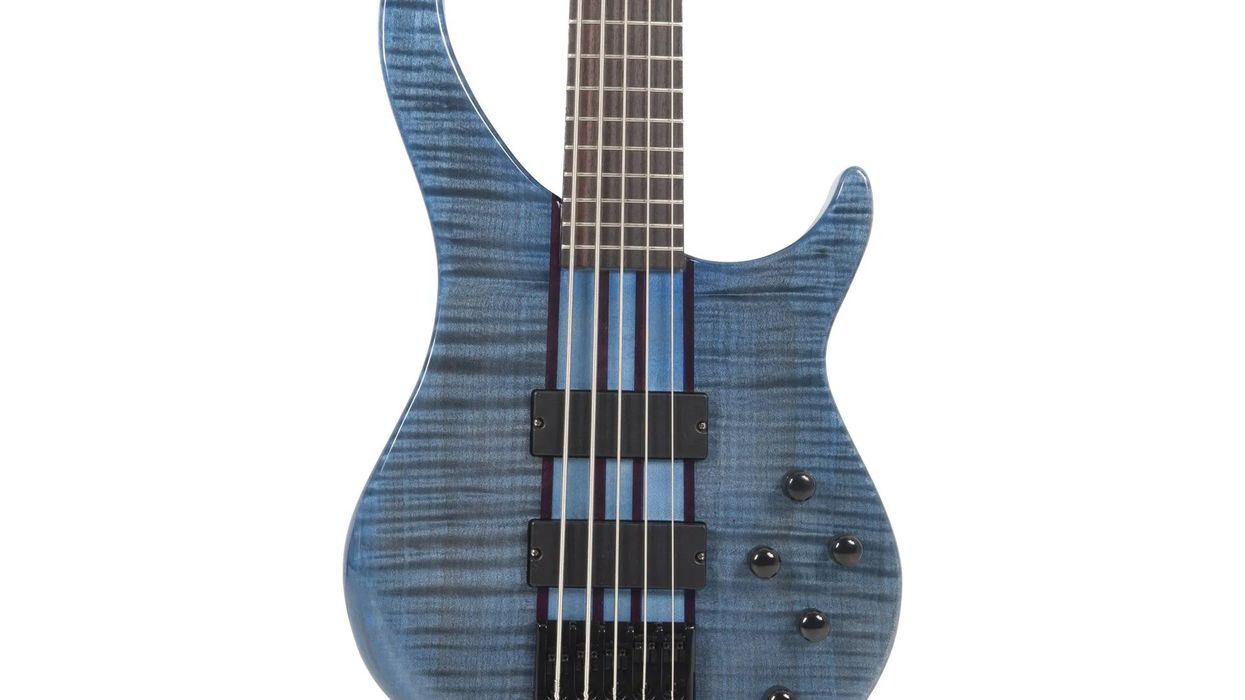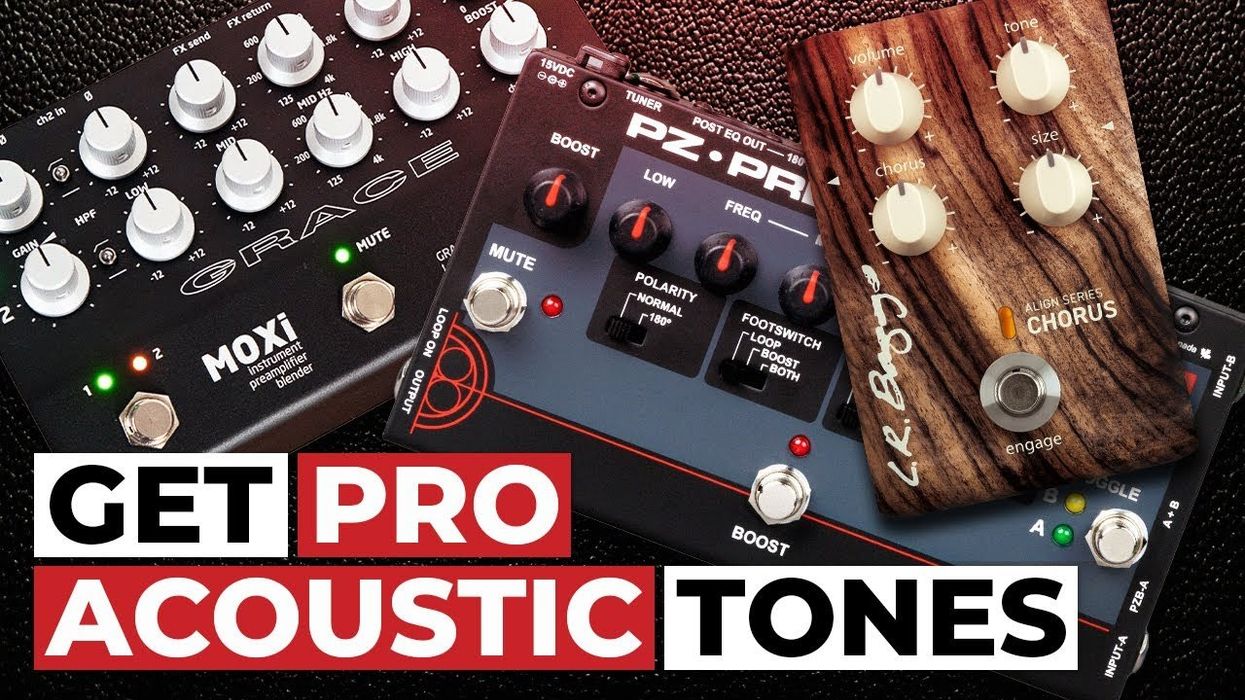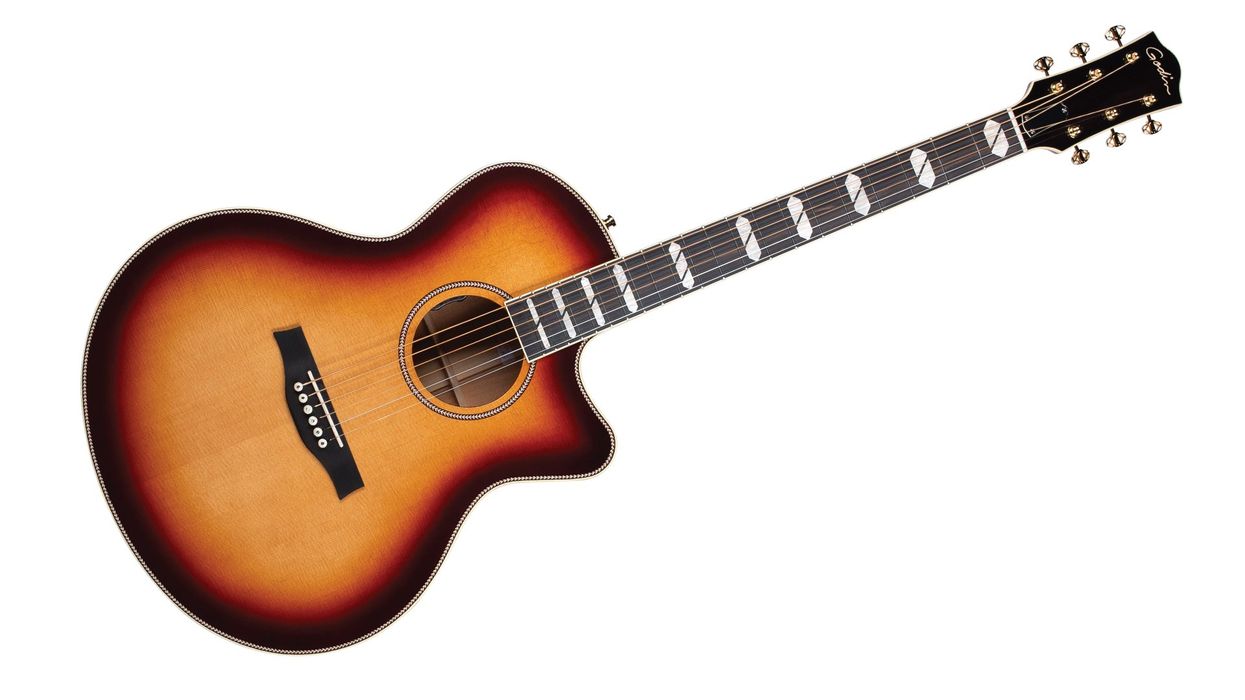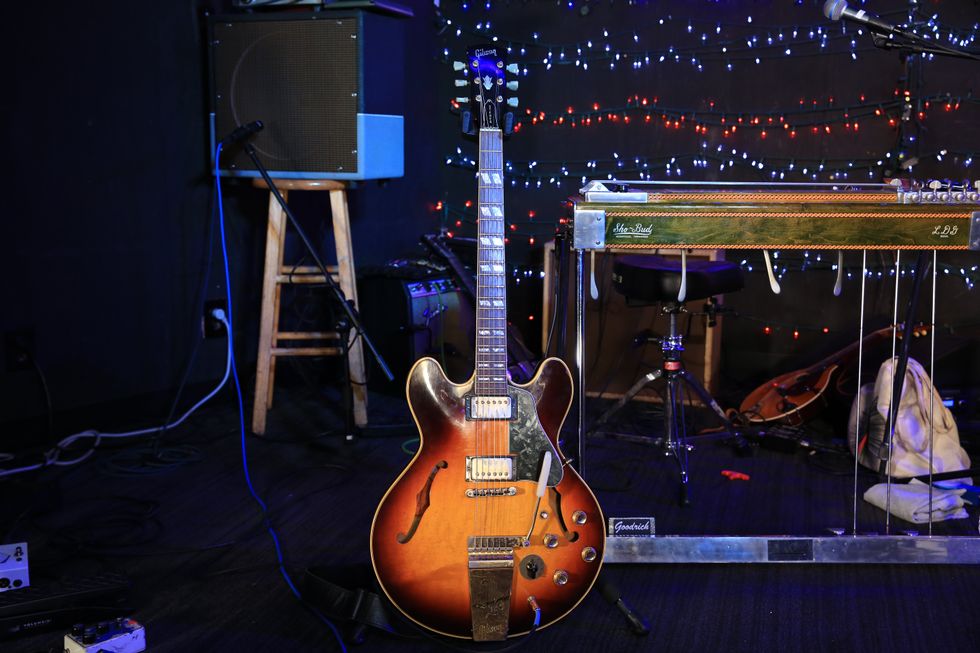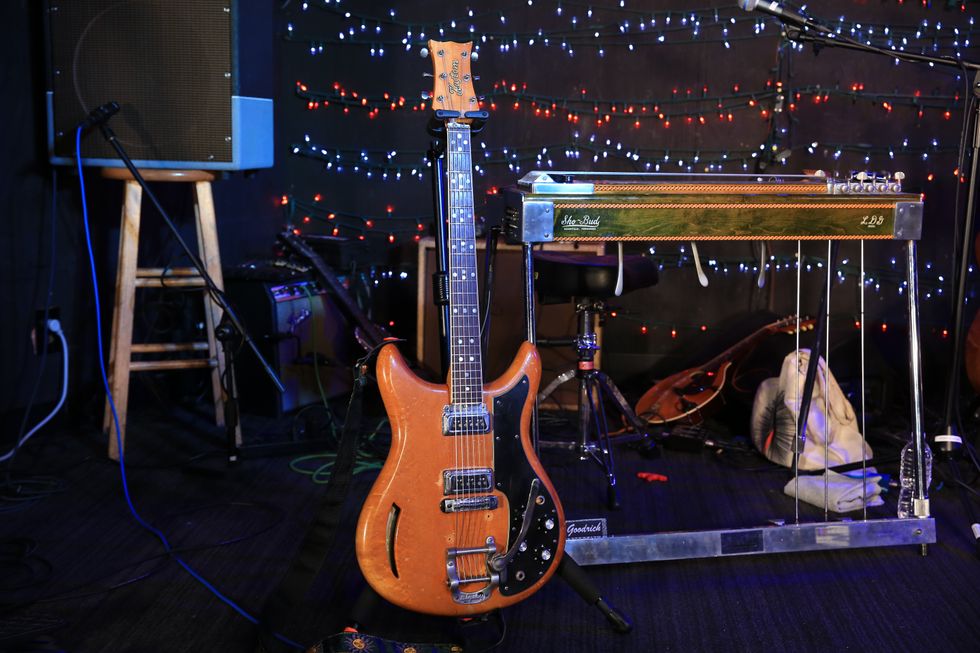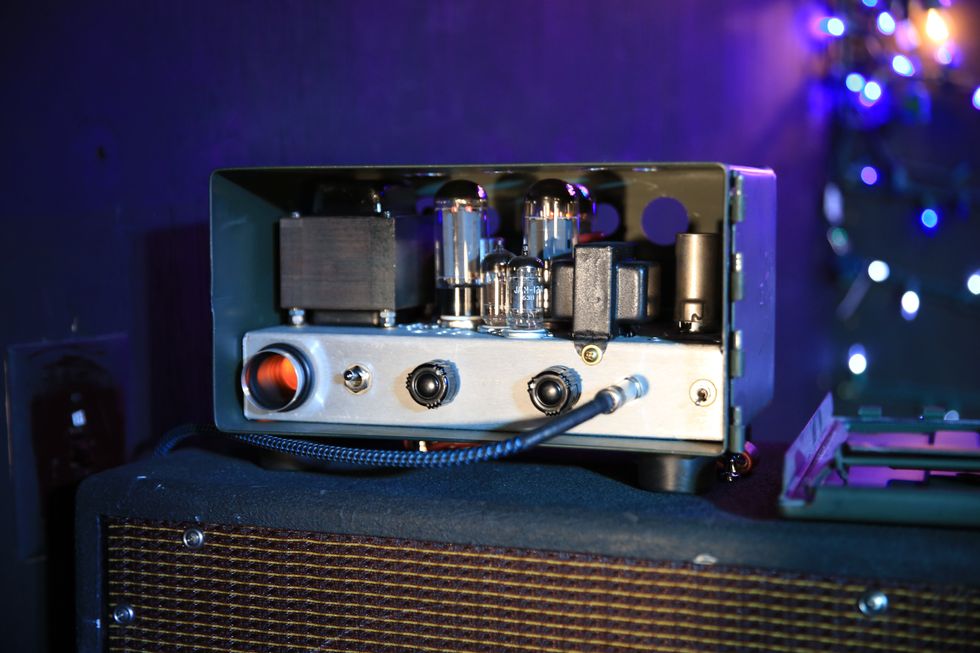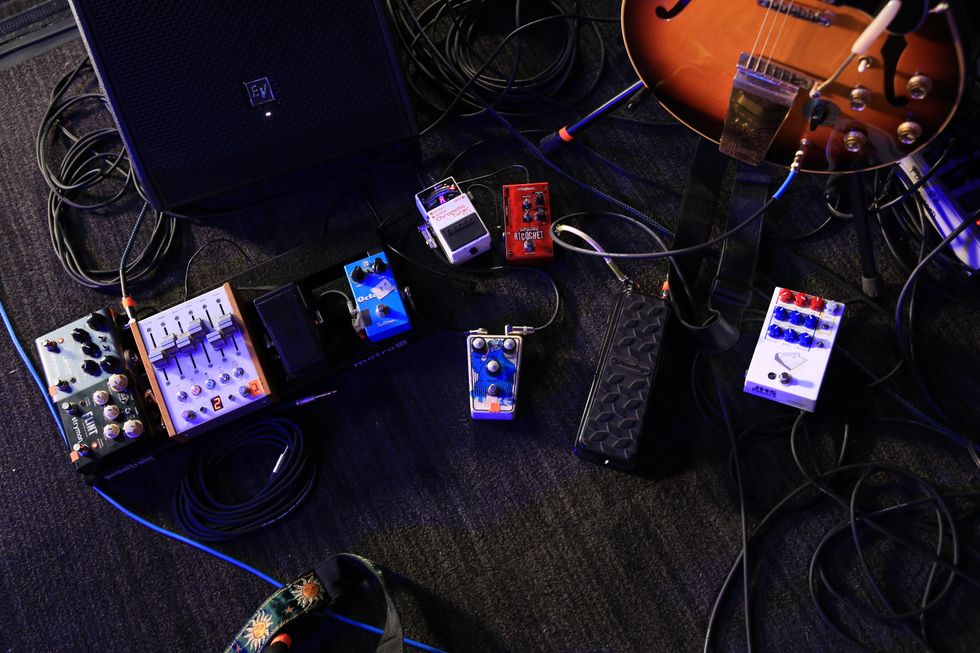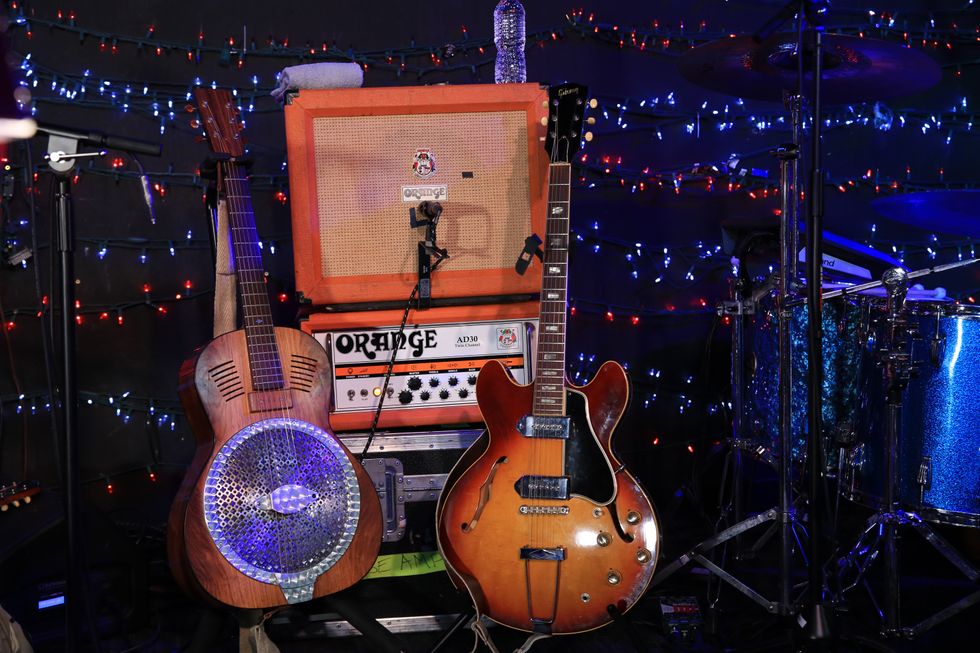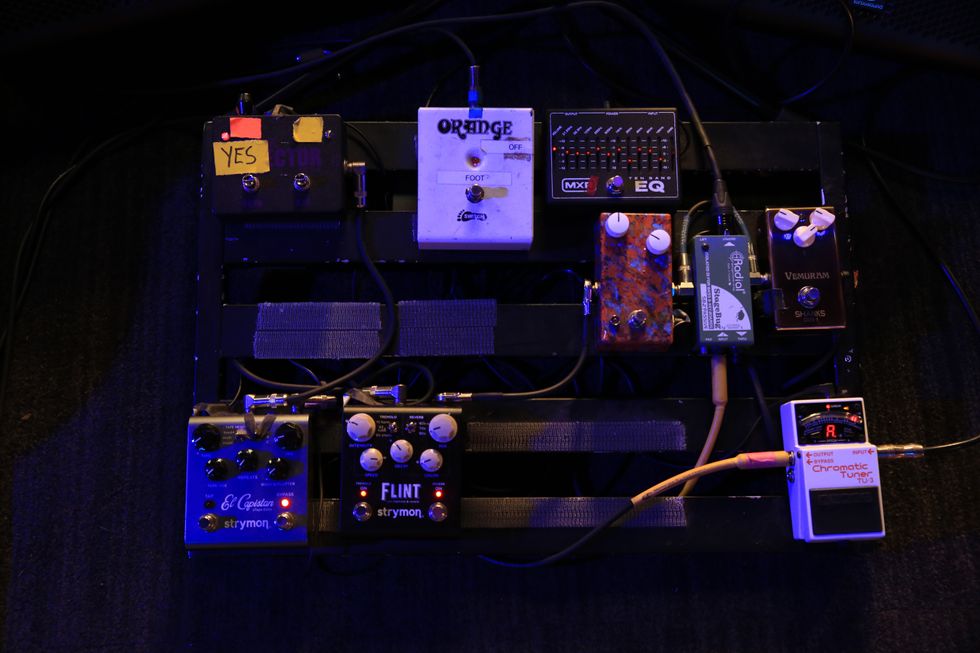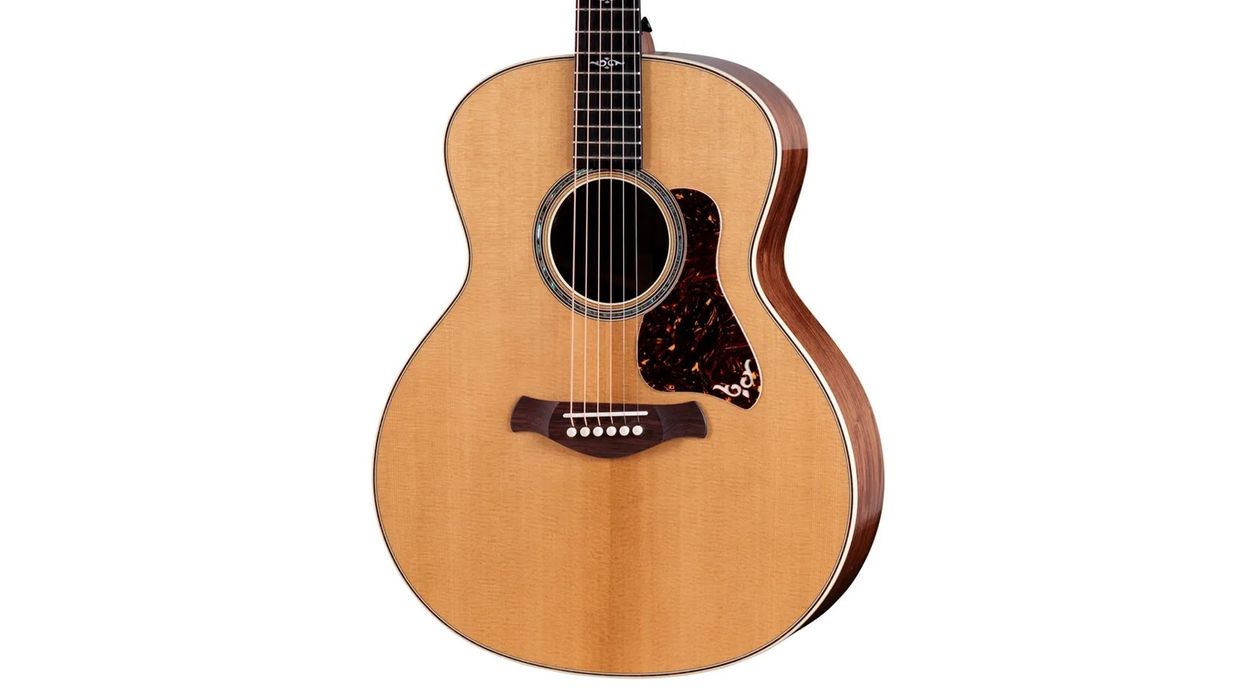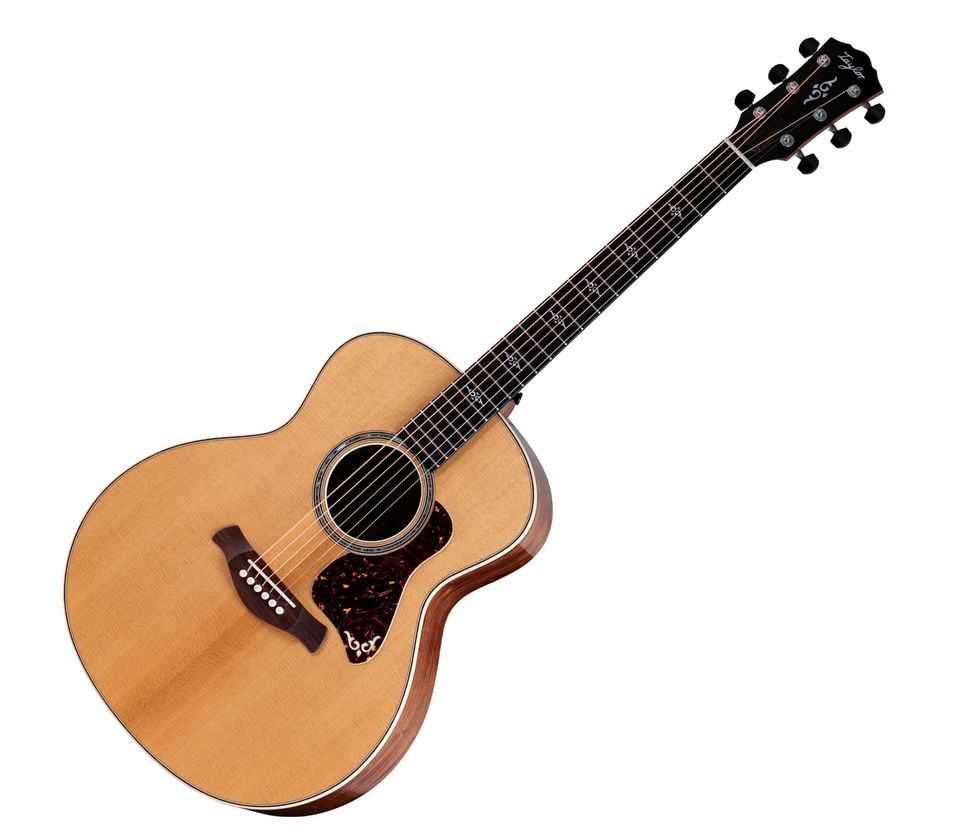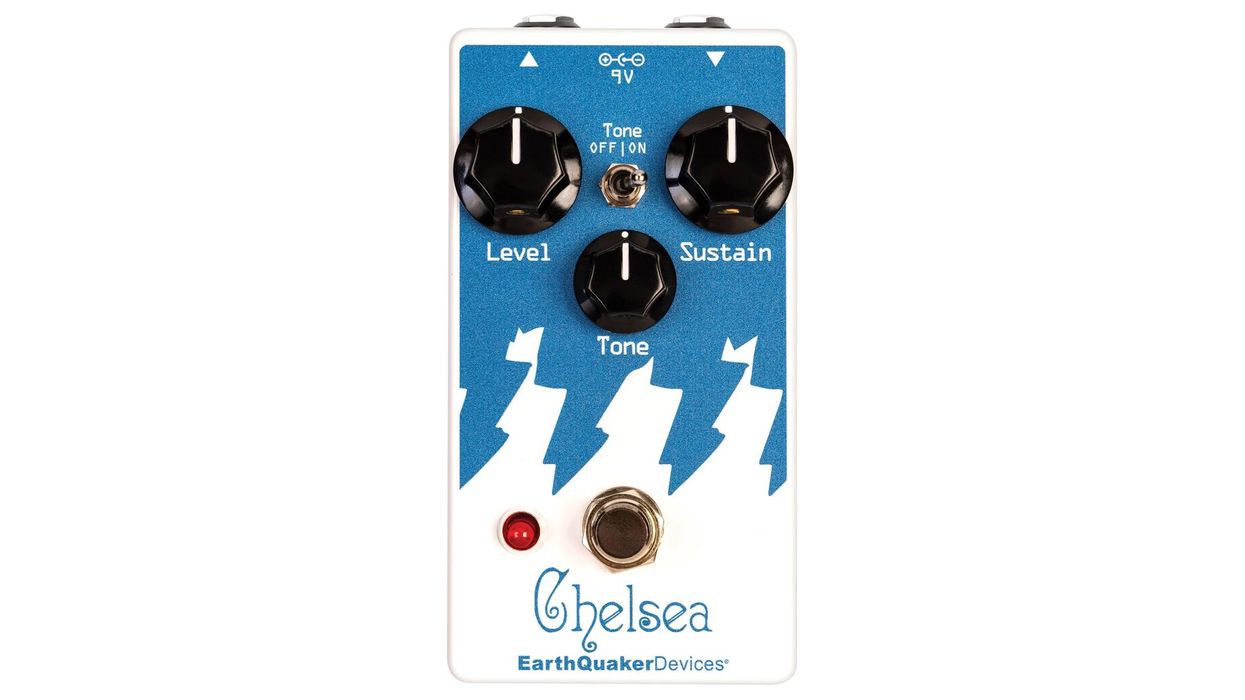RatingsPros:A stylish and original design in an appealingly light guitar that delivers crushingly rocktastic tones. Superb playability from a sweet-feeling neck. Cons: Lower-wind humbuckers might increase versatility, and some players might prefer a conventional tone control. Street: $2,899 Ernie Ball Music Man Mariposa music-man.com | Tones: Playability: Build/Design: Value: |
Ernie Ball Music Man’s Mariposa was created for Omar Rodríguez-López of the Mars Volta and At the Drive-In—an artist who has long favored the angular, both in his guitars and in the music he makes with them. Little wonder, then, that the Mariposa hits the mark from every, um, angle.
Thanks to its stylized butterfly-wing lines (“Mariposa” is Spanish for butterfly), the guitar is a little bit Firebird-y and a little Jag-and-Jazzmaster-like. But the body is smaller than any of those offset or reverse-bodied styles, and it achieves a look that is unique—simultaneously modern, retro, and from some no-man’s-land in between. Primarily, it’s a super-playable guitar that compels you to pick it up and dive in.
Angular Alternative
Dressed up with an ebony fretboard with pearloid block markers, the Mariposa’s neck is made from the roasted maple (hand rubbed with a gunstock oil and wax blend) that’s turned up on many recent Ernie Ball Music Man instruments. And with its rounded, medium-depth profile, it feels absolutely luscious in hand. Although I tend to like wider, deeper necks on my own guitars, the 1 5/8" width across the compensated synthetic nut means the Mariposa doesn’t feel the least bit parsimonious where playing room is concerned. The 22 medium-jumbo frets are beautifully polished and bend inspiringly. And the 25.5" scale length, 10"-radius fretboard, and sculpted heel also help make it delectably slick and playable.
Other than the looks, the first thing you’re likely to notice when hoisting the Mariposa is that it’s light. A body made from solid okoume wood and a distinctly petite lower bout help make the guitar just a shade less than 7 pounds. The smooth and generous ribcage contour around back enhances the comfort, too. The “pueblo pink” finish is one of two offered on the standard models (“dorado green” is the other), while two Deluxe models (“imperial black” and “imperial white”) feature gold-plated hardware and gold hat knobs. The pickguard, meanwhile, is laser-etched with a floral design that’s also home to a recessed, short-throw toggle switch embedded near the lower horn’s tip for easy access.
Pickups are a pair of Ernie Ball Music Man custom-wound, high-output humbuckers (measuring 16k ohms in the bridge position and 14k ohms in the neck). They’re wired through individual volume controls with what Ernie Ball Music Man calls the “tethered tone circuit,” meaning high-end attenuation occurs as you roll back the guitar volume. Given how hot these pickups are, I suspect some players would prefer a conventional tone control so they could shape high-end output at full volume. But this alternative delivers interesting musical results, if less control.
The bridge is Ernie Ball Music Man’s two-point modern tremolo with individually adjustable bent-steel saddles and an attractive chevron cover. The cover is removable if the look bothers you for any reason, but you have to disassemble the bridge to get at it, and it does make an excellent hand rest for palm muting. Schaller tuners with pearloid buttons grace the asymmetrical headstock.
Commercial Alternative
The hot pickups suggest the Mariposa is primed for rock, and it delivers those tones with authority. Tested through a 50-watt Friedman Small Box head and 2x12 cab, as well as a Fractal Axe-FX III into the studio monitors, this featherweight guitar exhibited a propensity for scorching leads and soaring feedback when you want it.
The core tone is thick, meaty, aggressive, and bright, which helped the Mariposa cut through dense mixes and sing expressively in the room. As advertised, the volume controls perceptibly re-voice the pickups as you turn them down, and darken quite fast. And tone shifts are most pronounced when you’re in the middle position, with both pickups engaged. Through an edge-of-clean amp setting, the guitar excels at fat, gnarly blues and alt-rock crunch, but stinging lead tones are just a touch of gain away.
While the Mariposa is a crushingly muscular performer, the playing feel is lithe and wiry—a sensation enhanced by the expressive vibrato unit that’s sensitive and stays impressively in tune. I’d love to try the Mariposa with a less-hot vintage-wound humbucker option, which I think would both sweeten its voice and enhance the model’s versatility. But the Mariposa is perfectly voiced for Rodríguez-López’s unique, high-energy approach, and a review of his catalog and work can tell you a lot about how well the Mariposa might work for your own.
The Verdict
The Mariposa is a creative, original, and powerful design. It’s relatively expensive, but no more so than many boutique electrics that offer little in terms of extra quality, tone, playability and/or original styling. Overall, it’s another job very well done from Ernie Ball Music Man, and a guitar that many noise-mongers and less-conventional alternative players will be itching to get their hands on.
Watch the First Look:




